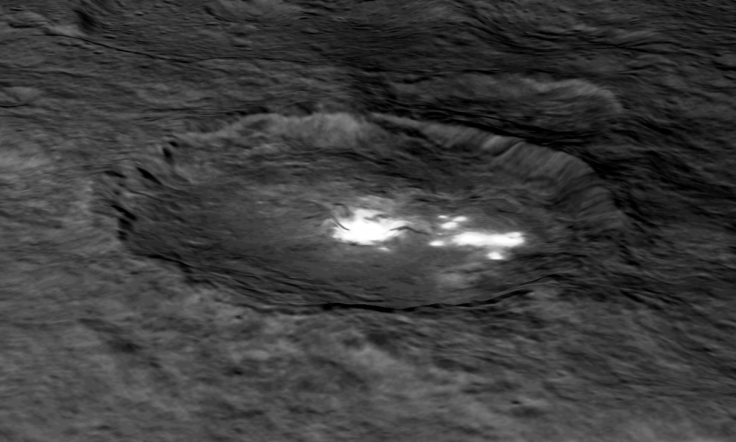Ceres bright spots mystery solved: Dawn data points to impact craters
The mystery bright spots on the surface of Ceres are associated with impact craters and are likely composed of hydrated magnesium sulphates, scientists have said. Using data from the Dawn spacecraft, scientists were able to make detailed observations of the surface of the dwarf planet.
The bright areas were first discovered earlier in 2015 as Dawn edged closer to Ceres, baffling scientists as to what they were. Following the discovery of the second bright spot, Max Planck scientist Andreas Nathues said: "The brightest spot continues to be too small to resolve with our camera, but despite its size it is brighter than anything else on Ceres. This is truly unexpected and still a mystery to us."
Nathues and colleagues have now used data from Dawn's Framing Camera to analyse the spots. In total, over 130 have been discovered, ranging in brightness levels from that of concrete to ocean ice. Publishing their findings in the journal Nature, the team notes that recent thermal evolution models have raised the possibility of geological activity on Ceres.

"Unlike on the icy satellites of Jupiter and Saturn, where tidal forces are responsible for spewing briny water into space, no tidal forces are acting on Ceres. In the absence of such forces, most objects in the main asteroid belt are expected to be geologically inert," they wrote. The discovery of water vapour nearby led to the idea there could be surface ice on the dwarf planet.
In the study, they researchers said the bright spots are consistent with hydrated magnesium sulphates "although other compositions are possible". They said the most interesting bright spot is that found on the floor of the Occator crater, which shows signs of having water-ice sublimation (where a solid becomes a gas without first becoming a liquid).
This sublimation could produce haze clouds inside the crater, made up of ice or dust particles, which appear and disappear with a daily rhythm. From this, the authors conclude that Ceres must have accumulated material from beyond the snow line (the distance from the sun where water molecules condense).
"Ceres is the first identified large body in the main asteroid belt showing not only primitive Solar System material, but also comet-like activity," they wrote. "Our results are consistent with widely distributed subsurface water or ice and water activity in the main asteroid belt, supporting the more recent view of a Solar System with a continuum in composition and ice content between asteroids and comets."
© Copyright IBTimes 2025. All rights reserved.






















